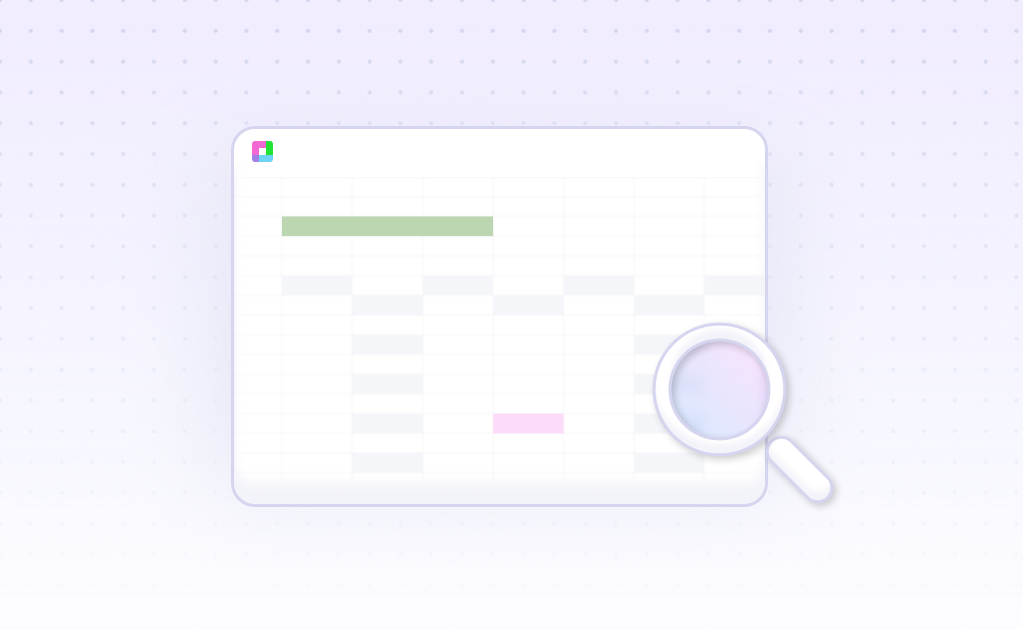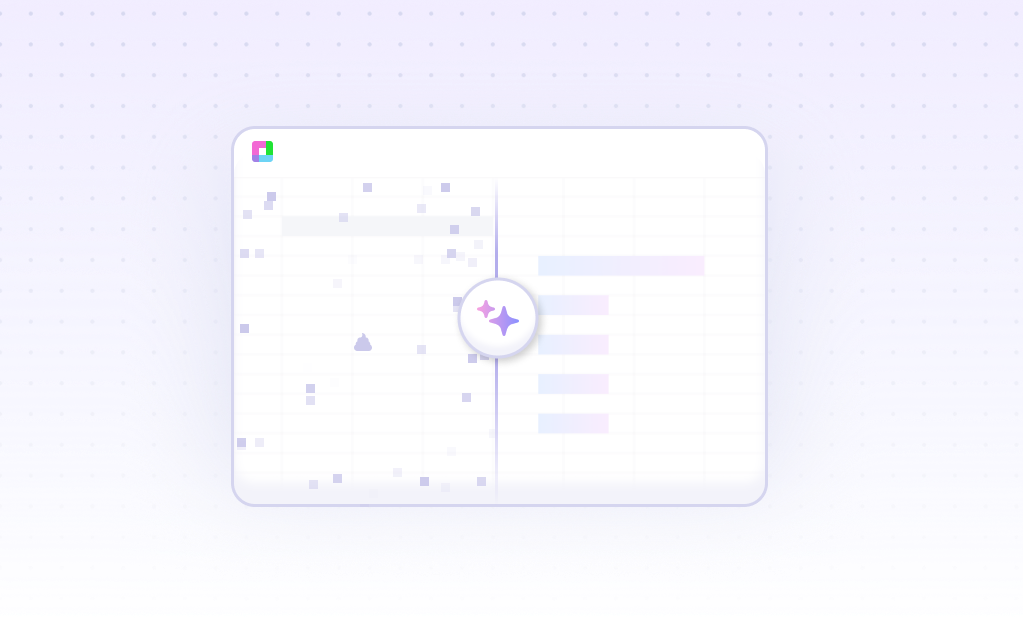
Picture this: It's 3 AM, and you're getting calls about a batch of products that somehow slipped through quality control. The defect rate is spiking, customer complaints are flooding in, and you're scrambling through spreadsheets trying to figure out what went wrong. Sound familiar?
Manufacturing quality control doesn't have to be a constant fire drill. With the right analysis tools, you can catch issues before they become expensive problems, identify patterns that humans might miss, and keep your production running smoothly.
Why Smart Quality Control Analysis Matters
Discover the key benefits
Real-Time Defect Tracking
Monitor defect rates across production lines instantly. Get alerts when quality metrics deviate from acceptable ranges before problems compound.
Pattern Recognition
Identify subtle patterns in quality data that manual inspection might miss. Spot correlations between production variables and defect rates.
Predictive Maintenance
Use quality trends to predict when equipment needs maintenance. Prevent quality issues before they impact production.
Cost Reduction
Reduce waste, rework, and customer returns by catching quality issues early. Track the financial impact of quality improvements.
Compliance Reporting
Generate compliance reports automatically. Maintain audit trails and documentation for regulatory requirements.
Supplier Quality Analysis
Track supplier performance and material quality over time. Make data-driven decisions about vendor relationships.
Quality Control Analysis in Action
Example 1: Defect Rate Trending
A precision parts manufacturer noticed their defect rate creeping up from 0.5% to 1.2% over several weeks. By analyzing their quality data in Sourcetable, they discovered the correlation wasn't random—it aligned perfectly with temperature fluctuations in their production facility.
The analysis revealed that when ambient temperature exceeded 78°F, the defect rate doubled. This insight led to improved climate control and brought defect rates back down to 0.3%—better than their original baseline.
Example 2: Supplier Performance Tracking
An electronics manufacturer was dealing with inconsistent component quality from multiple suppliers. They used Sourcetable to analyze incoming inspection data across six different vendors over 12 months.
The analysis showed that while Supplier A had the lowest unit cost, their components had a 15% higher failure rate during assembly. When factoring in rework costs and production delays, Supplier B was actually 23% more cost-effective despite higher unit prices.
Example 3: Process Control Optimization
A chemical processing plant was struggling with batch-to-batch consistency. Their quality control team used Sourcetable to analyze process parameters against final product specifications.
The AI-powered analysis identified that mixing speed variations of just 5 RPM could cause a 12% deviation in product consistency. This insight led to tighter process controls and reduced product variation by 40%.
Setting Up Quality Control Analysis
Discover the key benefits
Import Your Quality Data
Upload inspection reports, test results, and production data from your existing systems. Sourcetable handles CSV, Excel, and database connections seamlessly.
Configure Quality Metrics
Set up your key quality indicators—defect rates, specification limits, customer requirements. The AI learns what's normal for your processes.
Analyze Patterns
Let Sourcetable's AI identify trends, correlations, and anomalies in your quality data. Discover insights that manual analysis might miss.
Set Up Alerts
Configure automatic alerts when quality metrics exceed thresholds. Get notified before small problems become big headaches.
Generate Reports
Create automated quality reports for management, customers, and regulatory bodies. Keep everyone informed with real-time dashboards.
Quality Control Analysis Applications
Discover the key benefits
Incoming Inspection Analysis
Track supplier quality trends, identify problematic batches early, and make data-driven vendor decisions. Reduce incoming defects by up to 60%.
In-Process Quality Monitoring
Monitor production line quality in real-time. Catch deviations immediately and adjust processes before defective products are produced.
Final Product Testing
Analyze final inspection data to identify systemic issues. Track quality improvements over time and validate process changes.
Customer Complaint Analysis
Connect customer feedback to production data. Identify root causes of quality issues and prevent recurring problems.
Equipment Performance Correlation
Link equipment performance data to quality outcomes. Predict when maintenance is needed based on quality trends.
Regulatory Compliance Tracking
Maintain comprehensive quality records for audits. Generate compliance reports automatically and ensure traceability.
Advanced Quality Control Capabilities
Statistical Process Control (SPC)
Sourcetable automatically generates control charts, calculates process capability indices (Cp, Cpk), and identifies out-of-control conditions. No need to manually create SPC charts—the AI handles the statistical heavy lifting.
Multi-Variable Analysis
Analyze the interaction between multiple process variables and quality outcomes. Discover which combinations of temperature, pressure, speed, and material properties produce the best results.
Trend Forecasting
Predict future quality performance based on historical trends. Plan maintenance schedules, adjust process parameters, and prevent quality issues before they occur.
Root Cause Analysis
When quality issues arise, Sourcetable's AI helps identify the most likely root causes by analyzing correlations across all your quality and process data.
Frequently Asked Questions
How do I import quality data from our existing systems?
Sourcetable supports CSV files, Excel spreadsheets, and direct database connections. You can also set up automated imports from most quality management systems and manufacturing execution systems (MES).
Can I track quality metrics across multiple production lines?
Yes, Sourcetable can handle quality data from multiple production lines, facilities, and even different product types. You can create consolidated dashboards or analyze each line separately.
What types of quality metrics can I analyze?
You can analyze any quantitative quality metric: defect rates, dimensional measurements, test results, customer complaints, supplier performance, process capability indices, and more.
How does the AI identify quality patterns?
Sourcetable's AI uses advanced statistical analysis and machine learning to identify correlations, trends, and anomalies in your quality data. It can spot patterns that might be too subtle for manual analysis.
Can I set up automatic alerts for quality issues?
Yes, you can configure alerts based on any quality metric or combination of metrics. Get notified via email or dashboard when defect rates exceed thresholds or when unusual patterns are detected.
Is my quality data secure?
Absolutely. Sourcetable uses enterprise-grade security with encryption in transit and at rest. Your quality data remains private and is never shared with third parties.
Can I generate compliance reports automatically?
Yes, Sourcetable can generate automated reports for ISO 9001, FDA, automotive standards, and other regulatory requirements. Reports can be scheduled and automatically distributed to stakeholders.
How long does it take to set up quality control analysis?
Most teams are analyzing their quality data within a few hours of importing it. The AI begins identifying patterns immediately, and you can start creating dashboards and reports right away.
Frequently Asked Questions
If your question is not covered here, you can contact our team.
Contact Us




